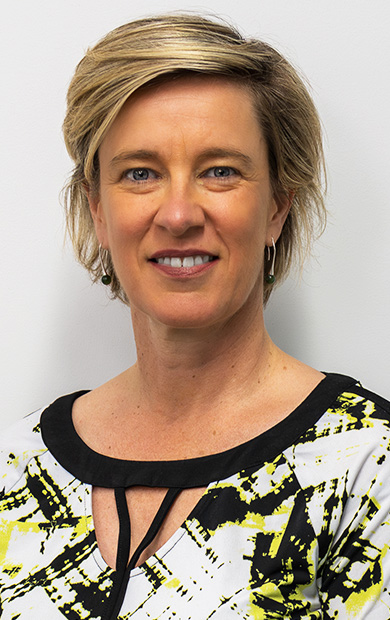Drug testing methods get a revision to increase safety
Statements
Key points:
- A revised standard for drug testing in saliva has been published to improve the reliability of results, confidence in the testing and ultimately improved safety
- The standard has been developed in partnership with a wide range of industry professionals including aviation and union representatives
Safety and reliability has taken front seat in a revised standard guiding the detection of drugs in oral fluids, aimed at improving onsite drug testing across several sectors of the economy.
Mobile drug testing is increasingly more common, with police conducting up to 200,000 roadside drug tests each year in NSW by the year 2020[1]. However, drug testing is also becoming more common and widespread in a range of industries such as mining, construction and transport. Standards Australia has been working with industry bodies and community members to update the standard for drug testing to ensure methods are up-to-date and deliver results consistent with community expectations.
“A number of occupations are involved in regular drug testing as part of achieving a safer workplace. Given the nature of the work at the centre of these tests, there is a strong interest in accurate results,” said Mr Adrian O’Connell, Acting CEO of Standards Australia.
AS/NZS 4760:2019, Procedure for specimen collection and the detection and quantitation of drugs in oral fluid, has been published with a clear commitment of results and safety. The standard highlights the latest methods of detecting drugs in saliva, which is particularly useful for law enforcement agencies as well as groups conducting local drug testing at major events like music festivals.
“This has been a very important area of work for us for some time. This revision has been built with regard to the latest technology and scientific developments to benefit to our community,” said Mr O’Connell.
“The publication of this standard will have incredible flow on effects, as it guides safety improvements across countless industries in communities across the country.”
Organisations performing onsite drug testing stand to benefit most, given the improvements provided by this standard for the detection of drugs using oral fluids, according to Dr Michael Robertson, Chair of the Standards Australia Technical Committee responsible for the revised standard.
“Procedures outlined in this standard have been developed with the support of device manufacturers, testing laboratories, aviation agencies, trade unions, and several other groups with varied interests and requirements,” Dr Robertson said.
“All of these groups have worked tirelessly together to ensure the standard is easy to use yet comprehensive, while achieving the primary aim of improving safety in the workplace and on our roads, rail and in the air.”
[1] https://roadsafety.transport.nsw.gov.au/stayingsafe/alcoholdrugs/drugdriving/index.html

Key points:
- A revised standard for drug testing in saliva has been published to improve the reliability of results, confidence in the testing and ultimately improved safety
- The standard has been developed in partnership with a wide range of industry professionals including aviation and union representatives
Safety and reliability has taken front seat in a revised standard guiding the detection of drugs in oral fluids, aimed at improving onsite drug testing across several sectors of the economy.
Mobile drug testing is increasingly more common, with police conducting up to 200,000 roadside drug tests each year in NSW by the year 2020[1]. However, drug testing is also becoming more common and widespread in a range of industries such as mining, construction and transport. Standards Australia has been working with industry bodies and community members to update the standard for drug testing to ensure methods are up-to-date and deliver results consistent with community expectations.
“A number of occupations are involved in regular drug testing as part of achieving a safer workplace. Given the nature of the work at the centre of these tests, there is a strong interest in accurate results,” said Mr Adrian O’Connell, Acting CEO of Standards Australia.
AS/NZS 4760:2019, Procedure for specimen collection and the detection and quantitation of drugs in oral fluid, has been published with a clear commitment of results and safety. The standard highlights the latest methods of detecting drugs in saliva, which is particularly useful for law enforcement agencies as well as groups conducting local drug testing at major events like music festivals.
“This has been a very important area of work for us for some time. This revision has been built with regard to the latest technology and scientific developments to benefit to our community,” said Mr O’Connell.
“The publication of this standard will have incredible flow on effects, as it guides safety improvements across countless industries in communities across the country.”
Organisations performing onsite drug testing stand to benefit most, given the improvements provided by this standard for the detection of drugs using oral fluids, according to Dr Michael Robertson, Chair of the Standards Australia Technical Committee responsible for the revised standard.
“Procedures outlined in this standard have been developed with the support of device manufacturers, testing laboratories, aviation agencies, trade unions, and several other groups with varied interests and requirements,” Dr Robertson said.
“All of these groups have worked tirelessly together to ensure the standard is easy to use yet comprehensive, while achieving the primary aim of improving safety in the workplace and on our roads, rail and in the air.”
[1] https://roadsafety.transport.nsw.gov.au/stayingsafe/alcoholdrugs/drugdriving/index.html



